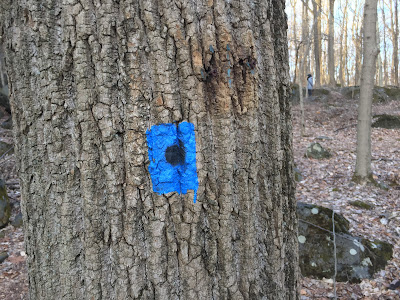Here's an indoor way to help out the volunteers who take care of nature trails in your local nature preserve. Sew a "rock net" for carrying the big stepping stones that help hikers get across streams and through muddy patches. I was corresponding with Alan Hershey of DR Greenway to update trail info for Herrontown Woods on NJTrails.org, and somehow the conversation turned to rocks--big rocks, the kind that work really well for trails--and how to get them to places too rugged for a hand truck. He recommended a rock net--a kind of cargo net developed by Deb Brockway, who has made several and steadily improved the design.
Below are instructions for anyone who has a knack for sewing and is looking for a good project. I know we could use one of these at Herrontown Woods, and other organizations could benefit as well. Thanks to Deb and Alan for this information.
The rock net, sometimes called a cargo net, looks like this:
Here are instructions from Deb:
Below are some helpful ideas from Deb on where to find materials:
"It is possible to buy a custom-made cargo net but they are relatively expensive, which is why I decided to make them. I have used 2-inch width recovery tow straps. The first straps I used I bought at Home Depot, which allowed me to feel the weight and clearly see the weave of the webbing. Those straps were no longer available from Home Depot, so I bought the next ones from Amazon and was not as pleased with the quality of the webbing (though there are lots of options, so I’m sure there are some with a tight weave). Next time around I will go to one of the online webbing sites to purchase it. That is a less expensive option and some of those outlets will cut all the pieces to requested lengths for no additional charge as compared to cutting a single entire length. The added benefit is that all of the ends would be (or should be) heat sealed when they arrive. If you cut the webbing you will need to melt all the cut ends to prevent fraying.
The attached document has additional information and sketches for cutting, assembling, and sewing a net like the orange one in the photo.
FYI… another option is to tie a net using thick rope. A trail crew I have worked with created such a net fashioned after a fishing net. It had a diamond net design, with knots tied at the junctures and some sort of gummy substance covering the knots."














































